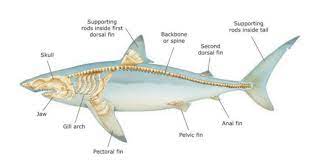Picture this: you’re at a cozy Asian restaurant, the aroma of your favorite dishes wafting through the air, and a pair of chopsticks in your hand. You’re eager to dig into that delicious meal, but there’s just one problem – you’re not sure how to hold those slippery little sticks.
If you’ve ever found yourself in this situation, you’re not alone. Learning how to hold chopsticks can be a bit of a challenge, especially if you didn’t grow up using them. But fear not, because this article is here to guide you through the basics.
Whether you’re a beginner or just looking to improve your chopstick skills, we’ve got you covered. Let’s dive in and demystify the art of holding chopsticks.
Table of contents
How to Hold Chopsticks?
Step 1: Prepare Your Chopsticks
Start with two identical chopsticks. Ensure they are clean and dry.
Step 2: Rest One Chopstick
Hold one of the chopsticks in your dominant hand, similar to the way you would hold a pencil. Rest it on your second and third fingers, with the thicker end pointing towards the palm of your hand. Your thumb should lightly press against the top of the chopstick.
Step 3: Hold the Other Chopstick
Take the second chopstick in your non-dominant hand. It should be under the first chopstick, parallel to it, and held between your thumb and the tips of your index and middle fingers. Your thumb and fingers should be about halfway down the length of the chopstick.
Step 4: Stabilize the First Chopstick
Keep the first chopstick stable in your dominant hand. It should remain stationary while you use the second chopstick to pick up food.
Step 5: Practice Pinching
Practice pinching the tips of the two chopsticks together with your thumb and fingers. Imagine that your chopsticks act like pincers, with the tips coming together to grip the food.
Step 6: Fine-Tune Your Technique
Fine-tune your technique by gently moving the top chopstick using the fingers of your non-dominant hand. Practice picking up small, lightweight objects, like small pieces of food, to gain better control.
Step 7: Practice Makes Perfect
The key to mastering chopstick use is practice. Start with easy-to-pick-up foods like rice, and gradually progress to more challenging items. With time and persistence, you’ll become more adept at using chopsticks for a variety of dishes.
Remember, it’s okay if you don’t get it right away. Holding chopsticks can be a bit tricky at first, but with consistent practice, you’ll improve your skills and enjoy the versatility of this traditional dining tool.
Are there different styles of holding chopsticks in various Asian cultures?
Yes, there are variations in the way people hold chopsticks in different Asian cultures. The specific techniques for holding chopsticks can vary based on cultural traditions and regional preferences. Here are a few examples of different chopstick-holding styles in various Asian cultures:
Chinese Style
Chinese chopstick holding typically involves gripping the chopsticks higher up the length of the sticks. The first chopstick is held between the thumb and the side of the index finger and rests on the tip of the ring finger.
The second chopstick is held against the first chopstick with the thumb and is manipulated by the index and middle fingers. This style allows for precise control and stability.
Japanese Style
In Japan, chopsticks are often closer to the tips. The first chopstick is placed between the thumb and the base of the index finger, while the second chopstick is held between the thumb and the tips of the index and middle fingers. This style offers a more delicate and refined grip, suitable for sushi and other Japanese cuisine.
Read also: What Does GMS Mean on Snapchat?
Korean Style
Korean chopstick holding is similar to the Chinese style but tends to have a slight variation. The first chopstick is between the thumb and the index and middle fingers, while the second chopstick is positioned against it with the thumb and index finger.
Korean chopsticks are metal or stainless steel and are flatter and wider, making them easier to grasp.
Vietnamese Style
Vietnamese chopsticks are often held higher up the length of the sticks, similar to the Chinese style. The first chopstick is secured between the thumb and the side of the index finger, resting on the ring finger.
The second chopstick is manipulated by the thumb and the tips of the middle and index fingers. This style is well-suited for picking up rice and various dishes.
Check out:: 26 Legitimate Ways to Get a Costco Student Membership for Free
Tips for improving chopstick skills?
Improving your chopstick skills takes practice and patience, but with time, you can become proficient. Here are some tips to help you enhance your chopstick skills:
- Choose the Right Chopsticks: If you’re a beginner, consider using chopsticks with textured tips or training chopsticks that have grooves to help you grip food more easily.
- Practice Regularly: Like any skill, chopstick use improves with practice. Make an effort to use chopsticks whenever you can, whether at home or when dining out.
- Master the Basic Grip: Focus on mastering the basic chopstick grip. Ensure that one chopstick remains stable while the other picks up food.
- Use Your Fingers: Your fingers, particularly your index and middle fingers, play a crucial role in manipulating the chopsticks. Practice precise movements with your fingers to pick up food accurately.
- Try Different Foods: Experiment with a variety of foods. This will help you develop your dexterity and control. As you become more confident, attempt to pick up smaller, more challenging items.
- Observe Others: Watch experienced chopstick users to observe their techniques. You can pick up useful tips and tricks by observing how others use chopsticks.
- Use Both Hands: Practice using chopsticks with both your dominant and non-dominant hands. Ambidextrous chopstick skills can be useful in various situations.
- Chopstick Rest: When not in use, rest the chopsticks on a chopstick rest or the edge of your plate. Avoid sticking them upright in a bowl of rice, as this is a cultural taboo in some Asian countries.
Over time, your chopstick skills will naturally improve, and you’ll find it to be a fun and rewarding way to savor a variety of dishes.
See also: What Age Do You Graduate High School?
Conclusion
Holding chopsticks is a skill that, like any other, takes a bit of practice and patience to master. But once you’ve got the basics down, a world of culinary adventures awaits you.
Whether you’re enjoying sushi, dim sum, or any other cuisine that employs these versatile utensils, knowing how to hold chopsticks can enhance your dining experience.
Frequently Asked Questions
A pair of chopsticks typically consists of two slim, elongated sticks that are held together at one end and taper to a pointed or blunted tip.
To hold chopsticks correctly, place one chopstick between your thumb and the side of your index finger, and rest it on the tip of your ring finger. Hold the second chopstick between your thumb and the tip of your middle finger. These two chopsticks should be parallel and should be able to move independently.
Yes, there are variations in chopstick-holding techniques across Asian cultures. For example, the Chinese typically hold chopsticks higher up the length of the sticks, while the Japanese hold them closer to the tips. It’s important to be mindful of cultural differences and adapt your technique as needed.
Yes, chopstick trainers and guides, which often have grooves or hinges to help align the sticks, can be useful for beginners. They can provide a tactile reference point for mastering the basic grip.
To improve your chopstick skills, practice is key. Start with easy-to-pick-up foods like rice and work your way up to more challenging items. Additionally, watch video tutorials or seek guidance from friends or family members who are skilled at using chopsticks.
References
- youtube.com– How to Hold Chopsticks
- web-japan.org– How to Hold Chopsticks
- everythingchopsticks.com– How to Hold Chopsticks





